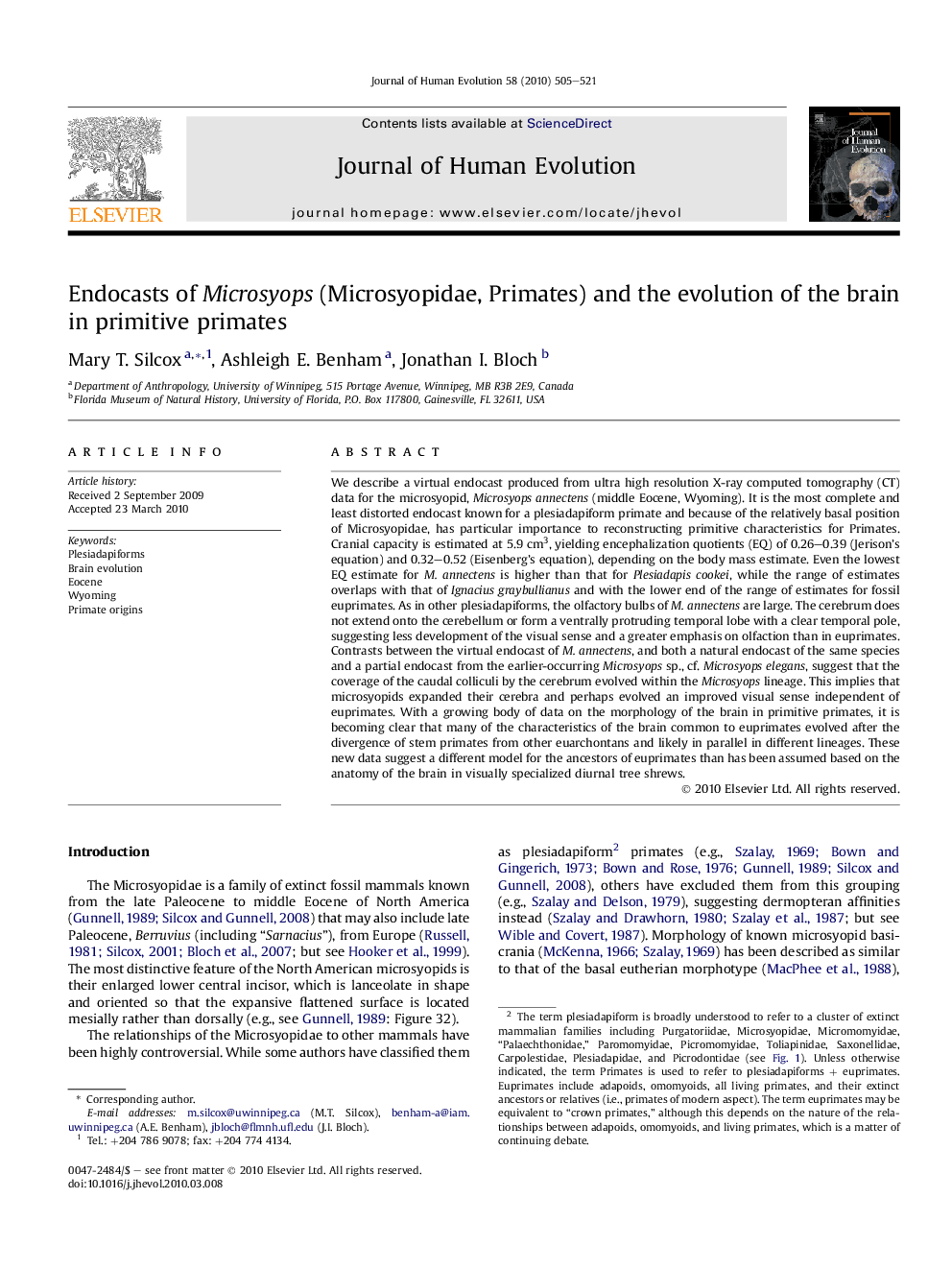| کد مقاله | کد نشریه | سال انتشار | مقاله انگلیسی | نسخه تمام متن |
|---|---|---|---|---|
| 4556760 | 1329502 | 2010 | 17 صفحه PDF | دانلود رایگان |

We describe a virtual endocast produced from ultra high resolution X-ray computed tomography (CT) data for the microsyopid, Microsyops annectens (middle Eocene, Wyoming). It is the most complete and least distorted endocast known for a plesiadapiform primate and because of the relatively basal position of Microsyopidae, has particular importance to reconstructing primitive characteristics for Primates. Cranial capacity is estimated at 5.9 cm3, yielding encephalization quotients (EQ) of 0.26–0.39 (Jerison’s equation) and 0.32–0.52 (Eisenberg’s equation), depending on the body mass estimate. Even the lowest EQ estimate for M. annectens is higher than that for Plesiadapis cookei, while the range of estimates overlaps with that of Ignacius graybullianus and with the lower end of the range of estimates for fossil euprimates. As in other plesiadapiforms, the olfactory bulbs of M. annectens are large. The cerebrum does not extend onto the cerebellum or form a ventrally protruding temporal lobe with a clear temporal pole, suggesting less development of the visual sense and a greater emphasis on olfaction than in euprimates. Contrasts between the virtual endocast of M. annectens, and both a natural endocast of the same species and a partial endocast from the earlier-occurring Microsyops sp., cf. Microsyops elegans, suggest that the coverage of the caudal colliculi by the cerebrum evolved within the Microsyops lineage. This implies that microsyopids expanded their cerebra and perhaps evolved an improved visual sense independent of euprimates. With a growing body of data on the morphology of the brain in primitive primates, it is becoming clear that many of the characteristics of the brain common to euprimates evolved after the divergence of stem primates from other euarchontans and likely in parallel in different lineages. These new data suggest a different model for the ancestors of euprimates than has been assumed based on the anatomy of the brain in visually specialized diurnal tree shrews.
Journal: Journal of Human Evolution - Volume 58, Issue 6, June 2010, Pages 505–521